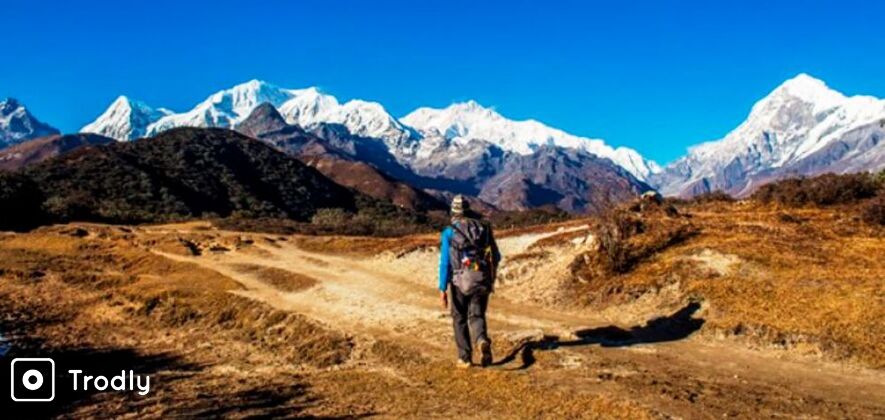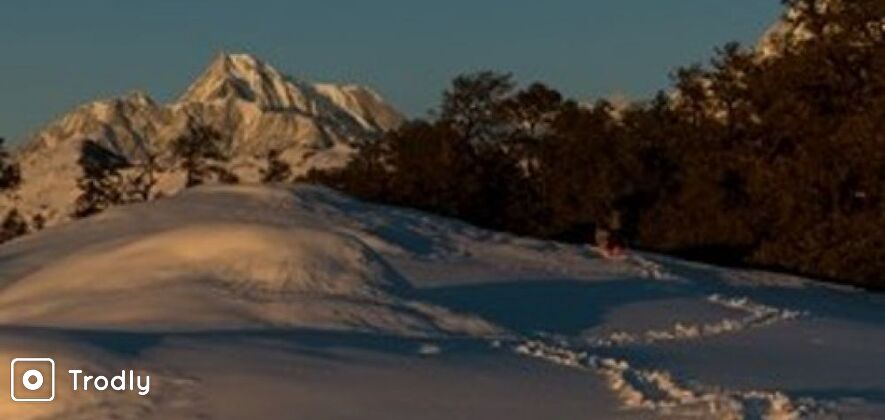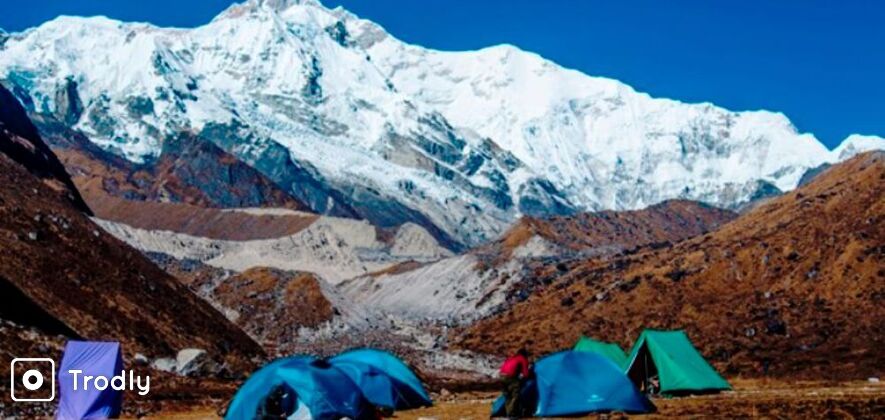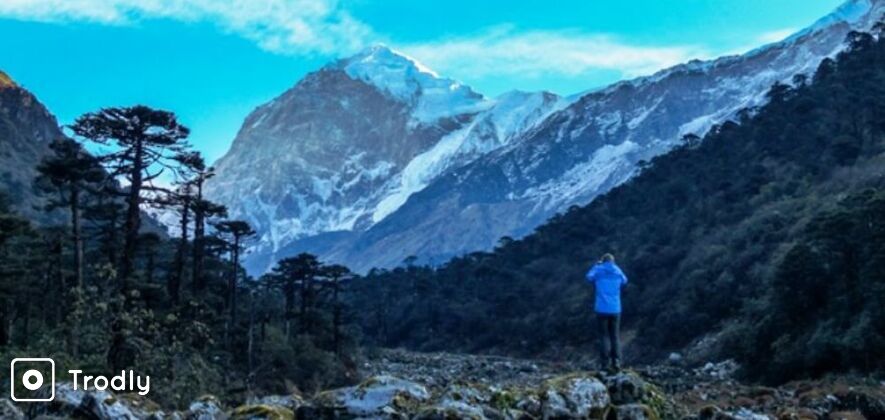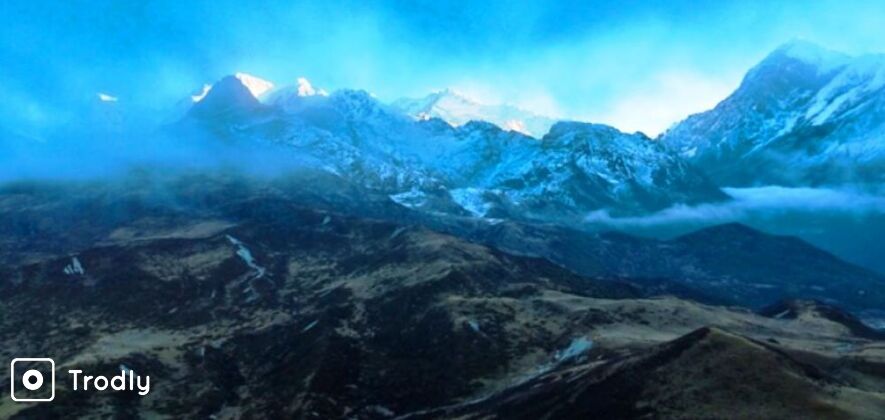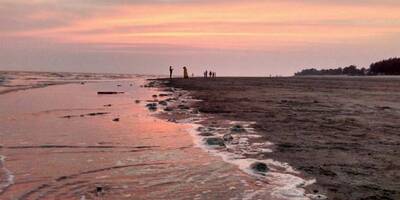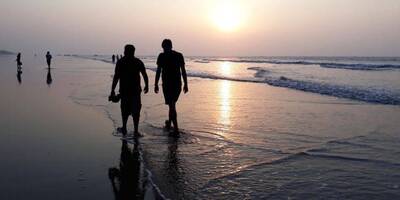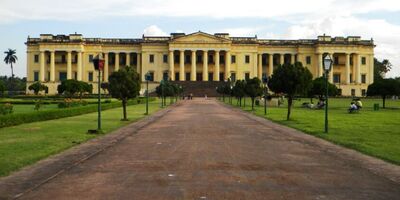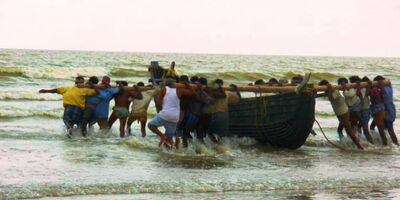Goecha La Trek
Trip Overview
There are very few trekking trails in India which are popular to both Indians as well as people all over the world. Goecha La trek ranks pretty high on the list if not a chart topper.
Highlights
- Trek close to Mt.Kanchendzongha and get an amazing view of the 3rd highest mountain in the world.
- Experiencing the Sikkimese culture on this trek.
- Trek for a distance of 85 kilometres.
- Climb up to an altitude of 4600 metres.
Detailed overview of Geoche La Trek
The best thing about Goecha La Trek is the fact that you trek literally in the shadows of Mt. Kanchendzongha, the third highest mountain in the World. This trek in North East India provides a totally different experience compared to trekking in the northern Himalayas. Not only you get to see different flora & fauna and scenery, even culture and people are diverse. The trail blends typical Eastern Himalayan moist and almost evergreen forests with a truly majestic view of Kanchendzongha and a host of high Sikkim peaks almost looming in. Entire Goecha la trek trail runs inside Kanchendzongha National Park. West Sikkim a UNESCO heritage site
Itinerary
Day 1: New Jalpaiguri - Yuksom | 160 km - 8/9 hours
- You will be picked up from New Jalpaiguri Railway Station (NJP) in the morning, post which you will be driven to the basecamp in Yuksom.
- You will arrive at the trek base Yuksom (1710 m/5600 ft) which was the first capital of Sikkim after 8-9 hours (including a lunch break) journey by road. The road goes via Teesta, Malli, Jorethang and Tashiding.
- The overnight stay will be conducted in a tourist lodge.
Day 2: Yuksom - Sachen | Trek 8 km - 4 hours
- You will start your 8 days of a strenuous but astonishingly beautiful trek from Day 2.
- The trek will begin at around 9/9:30 am, by the time you can visit the Yuksom Coronation site which is some 5/7 minutes from the bazaar area and has a small monastery adjacent to it.
- You may have your breakfast from one of the available restaurants, post which you begin your trek.
- The trail is typically a narrow river valley while the river is running in the gorge. You will slowly ascent going through the thick vegetation of subalpine evergreen forest of Sikkim.
- Your trail now enters into Kanchendzongha National Park. This Biosphere reserve is a Botanist’s paradise and rich with exotic birds, butterflies and mammals.
- You will continue the gradual ascent to a clearing you reach, which is your campsite of Sachen for the day. It may take around 4 hours and you will cover a distance of 8 Km.
Day 3: Sachen - Tsokha | Trek 8 km - 5/6 hours
- You will start gradually for the first half an hour and then descend to a bridge on the river Prek Chu (Chu means River in Nepali).
- After crossing the bridge, the trail turns to left and spirals up. This is the first half of climb for today and continuous one with steady height gain.
- You will climb through the often misty forest and slowly the valley widens up on our left. Slowly climbing for an hour and a half you will reach the top of this ridge.
- After a much-needed break, you will start your second phase of the climb for the day. The trail continues to zigzag and the first noticeable Rhododendron trees appear.
- Continue our climb and until you reach your destination Tsokha (2960 m/9700 ft) a tabletop on top of the hill. The camping ground of Tsokha is on the right of the trail and is a delight. You will also visit a monastery in the afternoon.
Day 4: Tsokha - Dzongri | Trek 12 km - 6/7 hours
- Today you gain significant height while most of the climb is moderately steep. The walk can be divided into 3 parts, climb till Phedang (3680 m/12070 ft), then further ascent to Deorali Top (4100 m/13,450 ft) and finally a gradual descent to your destination for the day Dzongri (3950 m/12,950 ft).
- You will leave Tsokha after crossing the monastery and turn right as the trail to start the steep climb for about half an hour.
- Then the trail is eases with paved wooden logs as rain turns it pretty muddy by the movements of Yaks and Horses.
- After climbing another hour you will reach a small clearing where you take a rest and enjoy the silence of the jungle. From this point climbing for little more than an hour we reach the top of this hill, a wide open area of Phedang.
- After a much-needed replenishment, you will start for the 2nd half of our climb.
- After climbing for two hours you will reach the top of Deorali, a sacred place having a Chorten and prayer flags. There are spectacular views of the Sikkim mountains and its peaks from here.
- You will start descending from this point and after crossing a clearing on a meadow you will climb a small hump. From this hump, you gently descend and traverse to the meadows of Dzongri. Walking around an hour you reach the Trekkers Hut and the camping site.
Day 5: Dzongri
- You wake up very early in the morning around 4 am and prepare to go to the top of Dzongri which is the sunrise point and offers majestic views. A good 45 minutes to an hour climb gaining a height around 200 m/650 ft will take you to Dzongri top.
- The panorama from Dzongri Top is simply breathtaking during sunrise when peaks are tinted in the softest of hues. It is almost an 150 degree panorama, from right Jopunu, Mt. Pandim to our left the Kabru group of peaks. Straight ahead is Kanchendzongha, the third highest peak in the world standing with massive glory.
- After clicking photographs you will descend to the base for the breakfast. In the early afternoon you may walk towards Dzongri La (Dzongri Pass) on the trail to Chowrikhang, HMI (Himalayan Mountaineering Institute) base camp for couple of hours.
- However a round trip to Dzongri La (Dzongri Pass) will take 6/7 hours and is out of scope, you will camp for the night in Dzongri.
Day 6: Dzongri - Lamuney | Trek 14 km - 7/8 hours
- After a nice warm breakfast, you will take the trail on the right from the trekker's hut and it gently climbs on the top of the ridge. Take a left from the top and walk on the level ground of Dzongri meadow.
- After an hour on the meadow, you start descending to the river bed through the dense forest. This trail is famous for Blood Pheasant, Sikkim’s state bird.
- Descending on the rock and gravel for about 45 mins you will reach level ground, Kokchurang ( 3700 m/12,135 ft).
- The place is a lovely camping ground with a Trekkers Hut and Prek Chu river flowing beside.
- After walking along the river for a while you gradually climb a ridge covered with moist fern and moss-laden trees and walking for another hour and a half you enter into the wide Thansing valley (3940 m/ 12,920 ft). Total distance is around 10 km and can take 5/6 hours.
- From here your today’s destination Lamuney (4150 m/13700 ft) is only 4 km away and hardly a couple of hours time. The camping ground is beside the river Prek Chu with a lone kitchen hut.
- You will camp beside the Prek. Dinner will be served early between 6 to 7 pm. It is a must that you sleep early today as tomorrow you need to start very early in the morning. Indeed another long and strenuous day.
Day 7: Lamuney - Goecha La - Kokchurang | Trek 16 km - 8/10 hours
- Two factors are important to decide that when do you start for Goecha La in the morning.
- You will have to start by 3 am latest that you reach Viewpoint 1 (sunrise point) before the dawn and return to Kokchurang camp by afternoon/early evening.
- Start with a torch (a headlamp is highly recommended) and take the trail going towards north to reach Samity Lake (4320 m/14,170 ft) in an hours time. Till here the trail is along very gentle gradient.
- Climb the well-marked trail at a steady pace for 2 km to reach Viewpoint 1 (4600 m/15,100 ft). From here looming Kanchendzongha dominates the vista and a vast panorama of peak sweeping towards the south which are on our left.
- You will continue further while descending on a loose scree zone and enter into a kilometre long flat sand bed, named as Zemathang (4500m, 14750ft). From Zemathang the pass is another 5 km.
- You will continue on the last patches of grass and finally a steep climb on scree to reach 2nd Viewpoint.It takes another 3 hours to reach here.
- The Goecha La pass (4950m, 16200ft) or 3rd Viewpoint can be seen straight a kilometre ahead and half hour from here over boulders covered with snow and occasional ups and downs. The pass is a wide open one, almost ~ 300m/1000ft.
- The return will also take a considerable time over this terrain. On your way back you trace the trail back and reach Samity lake (4200m/14100ft).
- We continue the trail to Lamuney and further down to reach the campsite of Kokchurang (3650m, 12000ft) via Thansing and be overnight camping for the night.
Day 8: Kokchurang - Tsokha | 18 km - 6/7 hours
- You take the trail on our left to bypass Dzongri and reach directly to Phedang.
- The trail is ideal for bird watching as human movement is very sparse. At times it is the only couple of feet wide and covered with fallen leaves.
- The 12 km long trail takes 4 to 5 hours of traversing and leading into the opening at Phedang. From here you turn left and descend to Tsokha on the same way you came.
- You will be camping overnight in Tsokha.
Day 9: Tsokha - Yuksom | 15 km - 5-6 hours
- Today is your last day on the trail and you descend via Bakhim and the bridge.
- From here you climb for half an hour and then almost straight to Sachen. Then you continue retracing your path back to the town of Yuksom.
- You will be staying overnight in a tourist lodge.
Day 10: Yuksom - New Jalpaiguri | 160 km - 8/9 hours
- You will be driven from Yuksom to New Jalpaiguri and be dropped at your desired location in the city limits.
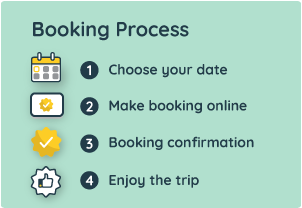
Basic Details
Inclusions
- 2 Night’s accommodation at Yuksom (Day 1 & Day 9) in a lodge on sharing basis. (Meals at Yuksom are not included).
- All meals during the trek (Day 1 lunch to Day 9 lunch). Regular Indian style nutritious vegetarian food during the trek (including occasional eggs), breakfast packed/hot lunch (depending upon the time you reach a campsite), snacks, dinner along with coffee/tea/soup.
- Excellent Trekking Guide, who will be a local to this particular area and has a profound knowledge of the trekking trails around.
- Specialised Cook, Support staff, Porters/Packed Animals for carrying the central logistics of the trek.
- Stay in tents (3 person dome or ridge-shaped tents) on sharing basis during the trek.
- Camping equipment like the Sleeping bag, Carry mattress, Gaiters, Microspikes/Crampon. (Bring your own sleeping if you have a high altitude specific personal Sleeping Bag. This is always better for hygienic reasons.)
- Kitchen tent, dining tent and toilet tent as required during the trek.
- All permit fee, camping charges, forest levy required for the trek inside Kanchendzongha National Park.
- Basic Medical & First Aid kit.
- Accidental Insurance Policy covering high altitude trekking tours (For Indian nationals it is included in the TREK FEE, up to 60 years of age). It covers your trek as well as your return journey to NJP/Bagdogra.
Exclusions
- Transportation from NJP/Bagdogra to Yuksom and return to NJP/Bagdogra. One way Tata Sumo ₹ 6000, may be shared by 5/6 fellow trekkers
- Any meal at Yuksom. There is a decent option for vegetarian and non-vegetarian breakfast and dinner in local restaurants (Indian Thali/Chinese/basic Continental)
- We assume that you will carry your personal Rucksack/Backpack with all your personal belongings. If you want to offload your Rucksack and be carried by Porter then you need to pay additional ₹ 2400 for the entire duration of the trek. The Rucksack should not weigh more than 10 Kg
- Any tip/gratuity to the support staff
- Any expenses of personal nature
- Anything not mentioned in the inclusions
Why book with TRODLY
- Best Price Guarantee
- Verified customer reviews that help you make the right decision.
- Qualified operators. All partner operators selected after rigorous system of checks.
- Free Cancellation on Most Trips
- Only Best Trips - Our team of travel experts bring uniquely local, safe, and exciting experiences to the community.
- 100% Secured Payments
Important Information
Rucksack/Back Pack: 1; (must have). Between 40 to 50 Litres. Don’t buy more than 60L unless you are in expeditions. These will be heavier and can cause discomfort if not fully loaded!)
Rucksack cover (Waterproof): 1; Advised. MUST for protection from rain/dust/stain etc. (Alternately you can keep your clothing and warm jacket inside polythene pack. Do get the pack(s) back to home and reuse/recycle).
Daypack/Knapsack: 1; Optional (Can carry along with you with a water bottle, food, camera and wind/waterproof etc.) if you want to offload your Rucksack in permissible routes.
Trekking Shoe/Boot: Pair; (must have). A good quality trekking shoe/boot must have the following specs :
i) A sticky rubber sole with a lug (indentations for better grip).
ii) Ankle support (Medium or high ankle).
iii) Waterproofing membrane. (A must for high altitude and winter treks).
Get a pair and “break-in” well in advance that you don’t face any sores/blisters once you are in mountains.
T-shirt (Base layer while you are hiking): 3/4; (must have). Take at least one Dry fit/Quick dry type which can ventilate sweat/moisture wicking. These are made of synthetic materials. Cotton T-shirts are NOT advised and avoid especially when you walk.
Warm Jacket (Mid layer clothing for warmth): 1; (must have)Warm Fleece Jacket/Synthetic fill (Some refer as Hollow Fill) Jacket/Down feather Jacket.
While hiking you will not require this unless you are hiking in cold conditions. Use this when you cool down at the campsite).
Windproof Jacket/Wind Cheater (Outer layer clothing for protection from wind and rain/snowfall): 1 (must have); A hooded one made of water-resistant/repellent material is highly advised.
Use this along with Base layer (t-shirt) while hiking unless it is warm and sunny weather. Wear this always as outer layer to protect from wind chill be while hiking or at campsite.
Thermal wear (Base Layer once you reach campsite): 1 pair; Upper and lower (Woolly cot). Must for winter treks.
Trek pant: 2 pairs (must have) Can be Track pants (avoid cotton), 3 quarter/Cargo or Convertible kind.
One Dry fit/Quick dry track pant is advised. Water repellent/proof quality is a plus.
For altitude above 5000m/16400ft, you should use windproof and waterproof trek pants.
Raincoat/Poncho/Waterproof clothing: 1 (must have); Waterproofing during your trek in the Himalayas, be it in summer or winter.
This can be achieved by any of the following:
ii) Use your windproof jacket and hiking pant having water repellent/proofing quality.
ii) A Poncho/Raincoat.
Balaclava/Woolen skull cap/Monkey Cap: 1; (must have) for protection from cold. Made of woollen/synthetic warm material.
Sun cap/Wide-brimmed Hat/Bandana: 1; For protection from the sun while you hike.
Undergarments/Innerwear: As per need.
Hiking Socks: 3/4 pair; Use full-length socks (Don’t use tennis socks). 100% Cotton socks are NOT recommended as these absorb sweat and dry slowly. A pair of woollen material is nice to have especially in winter treks.
Woollen gloves: 1 pair; (must have).
Waterproof gloves: 1 pair; Optional. Useful especially on high altitude treks where snow/ice is encountered.
Camp sandal: 1 pair; Can be a strap on sports sandal or a Hawaiian sleeper.
Walking Sticks/Trekking Poles/Ski Poles: 1 pair/Single; Nice to have, reduces the pressure on knees and gives balance especially while descending. Advised at least one pole for treks involving snow/ice.
Knee cap: 1 pair; Optional. Makes a difference especially if you have knee injuries/problems (Neoprene added variant is better).
Water bottle/Hydration pack: 1; (must have). Good quality plastic bottle.
Sunglasses: (must have) for all the high altitude treks and winter treks. Polarised/Anti-glare is always a better option in the snow with UV400 (UVA & B) protection. Trekkers using spectacle can order custom make powered sunglasses.
Torch/Head Lamp with extra batteries: (must have). Head torch keeps your hands free.
Accessories/Toiletries: Optional and try to share when you travel in a group.
Sunscreen lotion – Optional. At least 30/40 SPF.
ChapStick/Cold & Moisturising cream – Optional. As per need. Use small tubes/bottles.
Toothbrush and toothpaste – Carry a smallest available tube of toothpaste.
Soap/Soap strip – Carry small pocket size soap or Soap strip.
Hand sanitiser – Optional. Small bottle.
Tissue roll ( Toilet paper) – This is a must item as water may not be available in the vicinity.
Towel – Medium size (light weight).
Anti-Fungal Powder – Optional. This helps to keep the socks and the trek shoe drier and odour free to an extent. Carry smallest container.
Camera with extra cells: Optional. Normally there is no charging point on the Himalayan trek routes, carry spare batteries/power bank.
Dry food items(Kit): 1; (must have). Carry some dry fruits, chocolate/energy/protein bars and Glucon D/Tang/Getorade.
Personal First-Aid Kit: Optional – Anti septic cream, Betadine/Dettol/Savlon, Band aid, cotton, crepe bandage, safety pin etc.
Medicines Kit: 1; This is a simple guide line and a doctor’s consultation is recommended.)
a) General medicines comprising of headache, fever, vomiting, stomach upset and pain killer (Volini gel/spray)
b) Anti Diarrhoearal
c) Antibiotics – ( choose broad spectrum antibiotics for treating a variety of infections – carry a course of each)
d) Mild analgesics – (Aspirin/Paracetamol etc but DO NOT take Codeine based painkillers).
e) Strong analgesics (Co-Proxamol/Ponstan/Temgesic, use with care).
f) Anti-inflammatory (Nurofen or diclofenac sodium)
g) Diamox – This helps in acclimatisation (a proper dosage is must if taken. Drink lot of water as this is a diuretic drug.
Cancellation Policy
- Full refund if cancelled before* 7 days
- 50% refund if cancelled before 3 days
- No refund after that
Meet-up Information/Reporting Point
- New Jalpaiguri Railway Station (NJP), West Bengal
- The operator details will be shared post-booking, you may get in touch with the operator for queries related to pick-up and meeting point.
₹ 16290 Per Person
Similar Exciting Activities

Get trip inspirations, offers and more.

